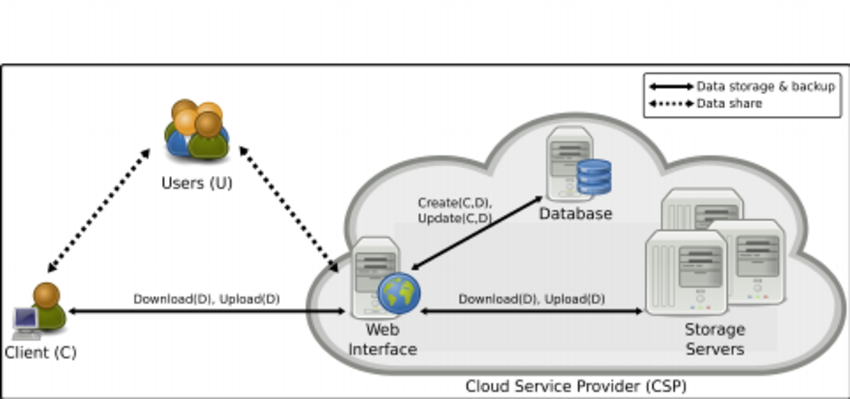Architecture of Cloud Storage

The architecture of cloud storage involves several components working together to provide scalable, reliable, and accessible storage services. While specific implementations may vary among cloud service providers, the fundamental elements typically include:
Clients: Users or applications interact with the cloud storage system through client interfaces. Clients can be web browsers, dedicated applications, or other software that communicates with the cloud storage service's API (Application Programming Interface).
Front-end Servers/APIs: Front-end servers or APIs (Application Programming Interfaces) act as an interface between clients and the underlying storage infrastructure. They handle authentication, access control, and translate user requests into operations on the storage backend.
Storage Backend: The storage backend is the core component responsible for storing and retrieving data. It consists of distributed and redundant storage systems to ensure data durability, availability, and scalability. The architecture may involve various storage technologies, such as object storage, distributed file systems, or block storage.
Metadata Service: Metadata includes information about the stored data, such as file names, access permissions, and timestamps. A metadata service manages and organizes this information, helping to locate and retrieve data efficiently. It's crucial for fast and accurate data access.
Data Replication and Distribution: To enhance reliability and availability, cloud storage systems often replicate data across multiple servers or data centers. This ensures that even if one server or data center fails, the data remains accessible from other locations. Distribution mechanisms help balance the load and improve performance.
Authentication and Authorization: Cloud storage systems implement authentication mechanisms to verify the identity of users or applications accessing the stored data. Authorization mechanisms define the permissions granted to users, determining who can read, write, or modify data.
Security Measures: Various security measures, including encryption during data transmission and storage, are implemented to protect the confidentiality and integrity of the stored data. Access control mechanisms ensure that only authorized users can access specific data.
Monitoring and Logging: Cloud storage providers often incorporate monitoring and logging systems to track usage patterns, detect potential issues, and provide insights into the performance of the storage infrastructure. This helps in troubleshooting, optimizing resource allocation, and ensuring compliance with service-level agreements (SLAs).
Load Balancing: Load balancing mechanisms distribute incoming requests across multiple servers to optimize resource utilization, enhance performance, and prevent bottlenecks.
Content Delivery Networks (CDNs): Some cloud storage services leverage CDNs to cache and deliver content from servers located closer to end-users. This reduces latency and improves the overall user experience.
Overall, the architecture of cloud storage systems is designed to provide a scalable, reliable, and secure solution for storing and retrieving data over the internet. Different cloud service providers may have variations in their architectures, but these fundamental components are common in most cloud storage systems.
Thank you.